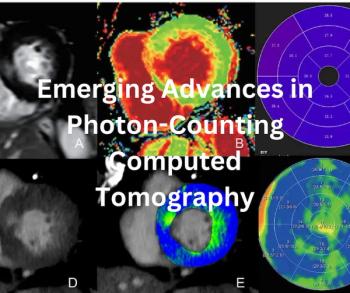
Siemens seeks to maximize customer choices in ultrasound
New systems provide continuity across modalitySiemens Medical Solutions has taken steps in recent months to shore up its ultrasound product line. It may complete the strategy with the ongoing development of a low-end system some
New systems provide continuity across modality
Siemens Medical Solutions has taken steps in recent months to shore up its ultrasound product line. It may complete the strategy with the ongoing development of a low-end system some time in the future.
Executives began extending the scope of Siemens' ultrasound offerings in 2002 with the introduction of the midrange Sonoline G60s ultrasound system in July and Sonoline G50 in November. The two systems, which were highlighted at the last RSNA meeting, are now shipping commercially, said Lars Shaw, director of worldwide marketing, general imaging, for Siemens.
"The G50 and G60s help us establish a broad range," he said. "They fill the middle with strong performing products that do color, share service, and meet any needs in the middle."
The two products, which replace the Omnia and Sienna, are small and portable. The G50 has an array of standard features, including tissue harmonic imaging, automatic optimization of color Doppler imaging, an open architecture, and ultrasensitive, wideband transducers. Targeted for the private office market, it has imaging capabilities that include vascular, cardiac, breast, abdominal, small parts, and ob/gyn. The G50 sells for between $50,000 and $70,000; no sales projections were offered.
The G60s is a high-performance, shared services system capable of providing advanced applications such as stress echo, transesophageal imaging, and panoramic imaging. Features include multibeam formation technology, precision motion capture, an ultrasensitive wideband transducer, and tissue harmonic imaging. It sells for between $65,000 and $100,000.
"We had some good performing systems in the Omnia and Sienna," Shaw said. "But these new systems are much better performing, much stronger, and now have the benefit of some technology migration and the combined engineering forces of Acuson and Sonoline."
The next logical step is to provide a very low cost, yet diagnostically viable, product. Such a unit would be priced around $20,000.
"We're looking at that," Shaw said. "We don't have a time frame for its development as yet. It's a real tough niche. We're just looking to see what we can do."
A key player in that market is SonoSite, which featured its iLook 15 and 25 systems during the RSNA meeting. The demand for smaller systems is considerable in poorer countries, which cannot afford expensive systems, Shaw said. Handheld units are also being adopted by U.S. practitioners. In some clinics, low-end systems are even sold on a cart with a printer and a slave monitor to make them look more substantial.
Newsletter
Stay at the forefront of radiology with the Diagnostic Imaging newsletter, delivering the latest news, clinical insights, and imaging advancements for today’s radiologists.

































